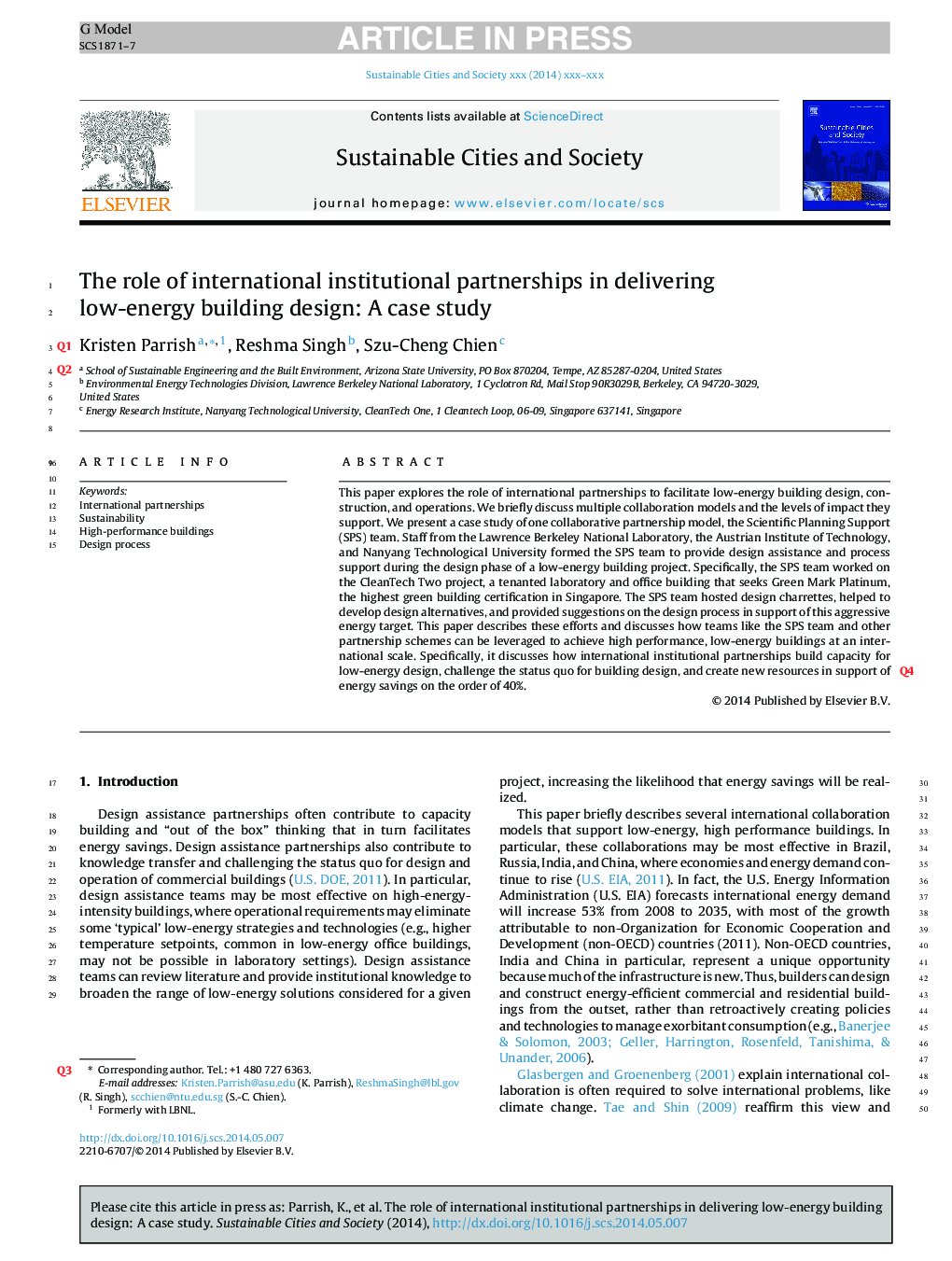| Article ID | Journal | Published Year | Pages | File Type |
|---|---|---|---|---|
| 6776477 | Sustainable Cities and Society | 2015 | 7 Pages |
Abstract
This paper explores the role of international partnerships to facilitate low-energy building design, construction, and operations. We briefly discuss multiple collaboration models and the levels of impact they support. We present a case study of one collaborative partnership model, the Scientific Planning Support (SPS) team. Staff from the Lawrence Berkeley National Laboratory, the Austrian Institute of Technology, and Nanyang Technological University formed the SPS team to provide design assistance and process support during the design phase of a low-energy building project. Specifically, the SPS team worked on the CleanTech Two project, a tenanted laboratory and office building that seeks Green Mark Platinum, the highest green building certification in Singapore. The SPS team hosted design charrettes, helped to develop design alternatives, and provided suggestions on the design process in support of this aggressive energy target. This paper describes these efforts and discusses how teams like the SPS team and other partnership schemes can be leveraged to achieve high performance, low-energy buildings at an international scale. Specifically, it discusses how international institutional partnerships build capacity for low-energy design, challenge the status quo for building design, and create new resources in support of energy savings on the order of 40%.
Related Topics
Physical Sciences and Engineering
Energy
Renewable Energy, Sustainability and the Environment
Authors
Kristen Parrish, Reshma Singh, Szu-Cheng Chien,
